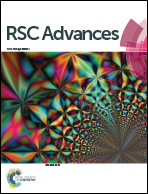Electrospun Cu2ZnSnS4 microfibers with strong (112) preferred orientation: fabrication and characterization
Abstract
In this study, Cu2ZnSnS4 (CZTS) microfibers were fabricated using a non-vacuum method of electrospinning following vulcanization process. CZTS fibers were obtained via the vulcanization of the electrospun precursor fibers at 500 °C (CZTS-500), 550 °C (CZTS-550), and 600 °C (CZTS-600), in sulfur ambient conditions. Samples were characterized by scanning electron microscopy (SEM) equipped with energy-dispersive spectroscopy (EDS), X-ray diffraction (XRD), XRD mapping scan, Raman spectrum and UV-vis absorption. Polycrystalline CZTS fibers with kesterite crystallization were formed in CZTS-500, whereas higher temperature vulcanization in CZTS-550 led to a strong preferential crystallization along CZTS [112] crystal direction around fiber surface, which is definitely confirmed by XRD mapping scan. More interestingly, the band gap value (Eg), which was 1.48 eV for CZTS-500, reduced to 1.43 eV for CZTS-550. Eg reduction may be related to lattice distortion induced by stress or strain around fiber surface, and can be beneficial for broadening optical absorption range thus increasing the efficiency of CZTS-based solar cells.


 Please wait while we load your content...
Please wait while we load your content...